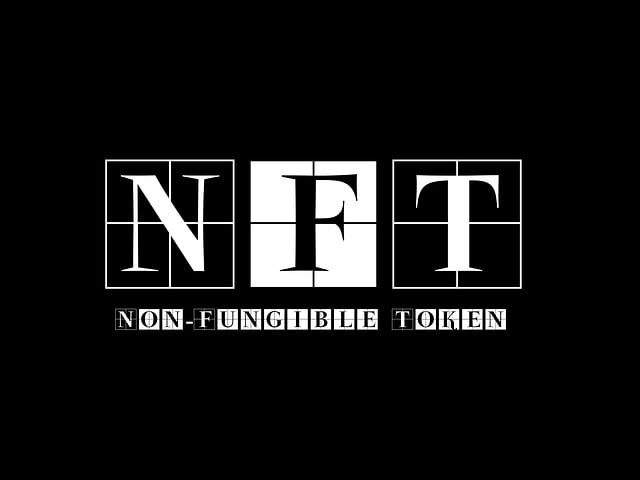In recent years, the world of digital assets has exploded with innovation, and one of the most talked-about developments is the rise of Non-Fungible Tokens (NFTs). From digital art and music to virtual real estate and collectibles, NFTs are transforming how we think about ownership and value in the digital age. But what exactly are NFTs, and how do they relate to cryptocurrency?
In this guide, we’ll explore:
- What NFTs are and how they work
- The technology behind NFTs
- How NFTs relate to cryptocurrency
- Real-world applications of NFTs
- The benefits and challenges of NFTs
- The future of NFTs and their impact on various industries
By the end of this article, you’ll have a clear understanding of NFTs and their role in the broader cryptocurrency ecosystem.
What Are NFTs?
NFTs, or Non-Fungible Tokens, are unique digital assets that represent ownership of a specific item or piece of content. Unlike cryptocurrencies like Bitcoin or Ethereum, which are fungible (meaning each unit is interchangeable with another), NFTs are one-of-a-kind and cannot be exchanged on a one-to-one basis.
Key Characteristics of NFTs
- Uniqueness
Each NFT has a distinct value and set of attributes, making it different from any other token. - Indivisibility
NFTs cannot be divided into smaller units. You either own the entire token or none of it. - Ownership and Provenance
NFTs are stored on a blockchain, providing a transparent and immutable record of ownership and transaction history. - Interoperability
NFTs can be bought, sold, and traded across different platforms and marketplaces that support the same blockchain standards.
How Do NFTs Work?
NFTs are built on blockchain technology, the same decentralized ledger system that underpins cryptocurrencies. Here’s a step-by-step breakdown of how NFTs work:
1. Creation (Minting)
An NFT is created, or “minted,” by uploading a digital file (such as an image, video, or audio file) to an NFT platform. The platform generates a unique token that represents the file and records it on the blockchain.
2. Ownership and Transactions
Once minted, the NFT can be bought, sold, or traded. Each transaction is recorded on the blockchain, ensuring transparency and security.
3. Smart Contracts
NFTs often use smart contracts to automate transactions and enforce ownership rights. For example, a smart contract can ensure that the original creator receives royalties every time the NFT is resold.
4. Storage
While the NFT itself is stored on the blockchain, the associated digital file is typically stored off-chain (e.g., on a decentralized storage network like IPFS) to save space and reduce costs.
How NFTs Relate to Cryptocurrency
NFTs and cryptocurrencies are closely related, as both are built on blockchain technology. However, they serve different purposes and have distinct characteristics.
1. Shared Technology
Both NFTs and cryptocurrencies use blockchain technology to record transactions and ensure security.
2. Cryptocurrency as a Medium of Exchange
Most NFT transactions are conducted using cryptocurrencies like Ethereum (ETH). Buyers use crypto to purchase NFTs, and sellers receive crypto in return.
3. Different Use Cases
- Cryptocurrencies: Used as a medium of exchange, store of value, or unit of account.
- NFTs: Used to represent ownership of unique digital or physical assets.
4. Interdependence
The growth of the NFT market has driven demand for cryptocurrencies, particularly Ethereum, which is the most commonly used blockchain for NFTs.
Real-World Applications of NFTs
NFTs have a wide range of applications across various industries. Here are some of the most notable examples:
1. Digital Art
NFTs have revolutionized the art world by enabling artists to monetize their digital creations. Platforms like OpenSea and Rarible allow artists to mint and sell their work as NFTs.
- Example: Beeple’s digital artwork “Everydays: The First 5000 Days” sold for $69 million at Christie’s auction house.
2. Music and Entertainment
Musicians and entertainers are using NFTs to sell albums, concert tickets, and exclusive content.
- Example: Kings of Leon released their album “When You See Yourself” as an NFT, offering exclusive perks to buyers.
3. Gaming
NFTs are transforming the gaming industry by allowing players to own, trade, and monetize in-game assets.
- Example: Games like Axie Infinity and CryptoKitties use NFTs to represent unique characters and items.
4. Virtual Real Estate
Virtual worlds like Decentraland and The Sandbox allow users to buy, sell, and develop virtual real estate as NFTs.
5. Collectibles
NFTs are being used to create digital collectibles, from trading cards to virtual sneakers.
- Example: NBA Top Shot allows fans to buy and trade officially licensed NBA highlight clips as NFTs.
6. Identity and Certification
NFTs can be used to verify identity, academic credentials, and professional certifications.
- Example: Universities could issue diplomas as NFTs, making them tamper-proof and easily verifiable.
7. Charity and Fundraising
NFTs are being used to raise funds for charitable causes and social impact projects.
- Example: The “CryptoPunk #7523” NFT was auctioned for $11.8 million, with proceeds donated to COVID-19 relief efforts.
Benefits of NFTs
NFTs offer several advantages for creators, buyers, and the broader digital economy:
1. Ownership and Authenticity
NFTs provide a verifiable and immutable record of ownership, reducing the risk of fraud and counterfeiting.
2. Monetization for Creators
NFTs enable creators to monetize their work directly, without intermediaries like galleries or record labels.
3. Royalties and Residual Income
Smart contracts can ensure that creators receive royalties every time their NFT is resold, providing a source of ongoing income.
4. Interoperability
NFTs can be used across different platforms and applications, increasing their utility and value.
5. Community and Engagement
NFTs can foster a sense of community and engagement among fans and collectors.
Challenges and Risks of NFTs
Despite their potential, NFTs also face several challenges and risks:
1. Environmental Impact
The energy consumption of blockchain networks, particularly Ethereum, has raised concerns about the environmental impact of NFTs.
2. Market Volatility
The NFT market is highly speculative and volatile, with prices subject to rapid fluctuations.
3. Intellectual Property Issues
The ease of minting NFTs has led to issues of copyright infringement and unauthorized use of intellectual property.
4. Scalability and Costs
High transaction fees (gas fees) on blockchain networks like Ethereum can make NFTs expensive to create and trade.
5. Lack of Regulation
The NFT market is largely unregulated, leading to potential risks for buyers and sellers.
The Future of NFTs
The future of NFTs is bright, with several trends and developments shaping their evolution:
1. Mainstream Adoption
As awareness and understanding of NFTs grow, they are likely to become more mainstream, with applications in industries like fashion, sports, and real estate.
2. Improved Scalability
Advances in blockchain technology, such as Ethereum 2.0 and layer-2 solutions, will improve scalability and reduce transaction costs.
3. Integration with DeFi
NFTs are increasingly being integrated with decentralized finance (DeFi) platforms, enabling new use cases like NFT-backed loans and fractional ownership.
4. Enhanced Interoperability
Cross-chain interoperability will allow NFTs to be used across different blockchain networks, increasing their utility and value.
5. Sustainability Initiatives
The NFT industry is exploring ways to reduce its environmental impact, such as transitioning to proof-of-stake (PoS) blockchains and using renewable energy for mining.
Conclusion
NFTs represent a groundbreaking innovation in the digital economy, offering new ways to own, trade, and monetize unique assets. While they are closely related to cryptocurrency, NFTs serve a distinct purpose and have a wide range of applications across various industries.
As the NFT market continues to evolve, it’s essential for creators, buyers, and investors to stay informed and navigate the opportunities and challenges that come with this transformative technology. Whether you’re an artist, gamer, collector, or entrepreneur, NFTs offer endless possibilities to explore and engage with the digital world.
The future of NFTs is just beginning, and their impact on the way we think about ownership, value, and creativity will only continue to grow. Are you ready to be part of the NFT revolution?


